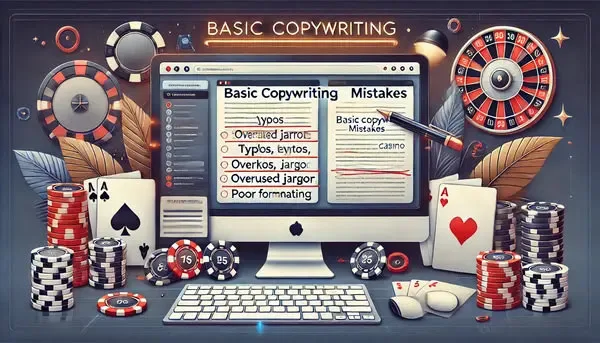
How to Create the Perfect Longread for Your Blog: A Step-by-Step Guide
Creating a longread for your blog can be an overwhelming task, but when executed correctly, it can be an invaluable tool for attracting and engaging your audience. A well-crafted longread not only provides in-depth information but also keeps readers on your site for longer periods, boosting SEO rankings. In this guide, we will take you through the essential steps to creating the ideal longread that not only informs but also captivates your audience.
1. Understand Your Audience
Before you begin crafting your longread, it’s crucial to understand who your target audience is. A deep understanding of your readers’ interests, preferences, and pain points will enable you to create content that resonates with them. Consider their age, gender, location, and their goals when consuming content. Are they looking for solutions to a problem, or do they simply want to be entertained? Knowing your audience helps shape the tone, style, and depth of the information provided in your article.
When you truly understand your audience, you’re able to craft content that speaks to them directly. For example, if your target audience consists of professionals, your content should be informative, authoritative, and provide actionable insights. On the other hand, if you’re writing for a general audience, a more casual tone and relatable examples may be more appropriate. Once you have a clear understanding of your audience, you’ll be in a better position to create content that provides real value.
Identifying the Right Topics
Choosing the right topic is the foundation of any successful longread. You should aim for topics that are both relevant to your audience and have sufficient depth to explore. Your topic must align with your audience’s interests and provide value. Consider conducting keyword research or even asking your audience directly what topics they would like to see covered. A great topic is not only one that you’re passionate about but one that addresses the specific needs of your audience.
Researching trending topics or analyzing search queries can also help identify areas where your audience is actively seeking information. This will ensure your content stays relevant and aligned with current interests. The right topic will act as a hook, drawing readers in and encouraging them to read through to the end. When selecting a topic, focus on how it will address your readers’ pain points or interests, and consider presenting new insights or perspectives to keep your audience engaged.
2. Structure Your Longread for Maximum Readability
The structure of your longread is essential for both reader engagement and SEO. A well-organized article with clear subheadings helps break the content into digestible chunks, making it easier for readers to navigate. Start by creating a detailed outline with the main sections and sub-sections to ensure a logical flow of ideas. This step is crucial to avoid overwhelming your readers with dense paragraphs.
The goal of a structured longread is to provide an easy-to-follow framework that guides the reader through your content in a logical, engaging manner. Consider using lists, bullet points, and bold text to highlight key takeaways, ensuring the article is easy to scan. Incorporating elements such as case studies, statistics, and expert quotes into each section will also add weight to your arguments and further enrich your content. Remember, the structure plays a significant role in enhancing readability and making the article more engaging.
Effective Use of Headings and Subheadings
Headings (H2, H3, etc.) play a significant role in improving readability. They serve as a roadmap for your readers, allowing them to jump to sections that are most relevant to them. Each section should have a clear focus and be detailed enough to stand alone. Use H2 headings for main sections and H3 for subsections. This hierarchy not only helps with navigation but also improves SEO by allowing search engines to better understand the structure of your content.
Additionally, when creating subheadings, aim to make them both informative and enticing. They should give a glimpse of what’s to come in each section, encouraging the reader to continue reading. Well-crafted subheadings also help with SEO by incorporating relevant keywords, making it easier for search engines to index your content properly. The more organized your content, the better your readers can digest the information, and the more likely they are to share it with others.
3. Write Engaging and Informative Content
Once you’ve chosen a topic and organized your content structure, it’s time to dive into writing. When creating a longread, it’s important to strike a balance between providing in-depth information and keeping the content engaging. Use a formal yet conversational tone to ensure clarity and keep your readers engaged. Each paragraph should add value, and the content should flow naturally from one idea to the next.
One key to creating engaging content is to write in a way that anticipates your readers’ questions and provides clear answers. Rather than simply presenting facts, explain them, provide context, and offer insights. Use examples and anecdotes to illustrate key points and keep the reader engaged. When appropriate, add a personal touch by sharing your own experiences or offering expert opinions. This makes your content more relatable and positions you as a trusted authority on the subject.
Keep Your Content Original and Valuable
One of the key elements of a great longread is originality. Search engines value unique content that provides real value to readers. Avoid regurgitating information already available on other websites. Instead, focus on offering fresh perspectives, insights, and practical tips. Research your topic thoroughly, and make sure you present information in a way that stands out from the competition.
Additionally, always fact-check your content to ensure accuracy and reliability. When you provide factual, well-researched information, you establish credibility, which is crucial for building trust with your audience. Incorporating data, statistics, and relevant sources into your article not only adds credibility but also increases the value of your content. Readers are more likely to trust content that is well-researched and supported by credible references.
4. Optimize Your Longread for SEO
Search engine optimization (SEO) is essential for driving traffic to your longread. By optimizing your content, you ensure it ranks well in search engine results, making it easier for your audience to find. Start by incorporating relevant keywords into your headings, subheadings, and body text. Use tools like Google Keyword Planner to identify popular search terms related to your topic.
Additionally, focus on content length. While there is no exact rule for how long a longread should be, longer content (generally over 1,500 words) tends to rank better in search results, as it is often seen as more comprehensive. However, make sure the content remains relevant and valuable throughout. Don’t add unnecessary fluff just to increase word count. Every section should serve a purpose and contribute to the overall value of the article.
Optimizing for Featured Snippets
Featured snippets appear at the top of Google search results and are a great way to get more visibility. To optimize your longread for snippets, focus on providing clear, concise answers to questions commonly searched by your audience. Use bullet points, numbered lists, and other formatting tools to make it easier for Google to pick up key information from your content.
Don’t forget to add internal and external links to boost your SEO efforts further. Linking to other relevant articles on your blog helps keep users engaged and lowers your bounce rate, which positively impacts SEO. Additionally, external links to reputable sources help increase your content’s authority. Search engines reward content that is well-linked and comprehensive, so make sure your longread provides a complete experience for the reader.

5. Edit and Proofread Your Content
Before publishing your longread, it’s essential to spend time editing and proofreading your content. Look for spelling and grammar errors, as well as sentences that may be unclear or redundant. Consider using tools like Grammarly or Hemingway Editor to catch mistakes and improve readability.
During the editing process, focus on improving the clarity of your writing. Remove any jargon or complex language that may confuse your readers. Shorten overly long sentences and break them into smaller, more digestible chunks. Ensure that each paragraph supports the overall flow of the article. Editing is an essential step in polishing your content and ensuring that it’s ready for publication.
Make Your Longread Visually Appealing
While content is king, presentation matters too. Break up long paragraphs with relevant images, infographics, and videos to make the article more visually appealing. Ensure your images are high quality and relevant to the content. Visual elements can make your longread more engaging and easier to digest, helping to keep readers on the page longer.
In conclusion, creating a perfect longread requires a combination of thorough planning, engaging writing, and SEO optimization. By following these steps, you can craft a detailed, informative, and user-friendly longread that resonates with your audience and ranks well in search results.




